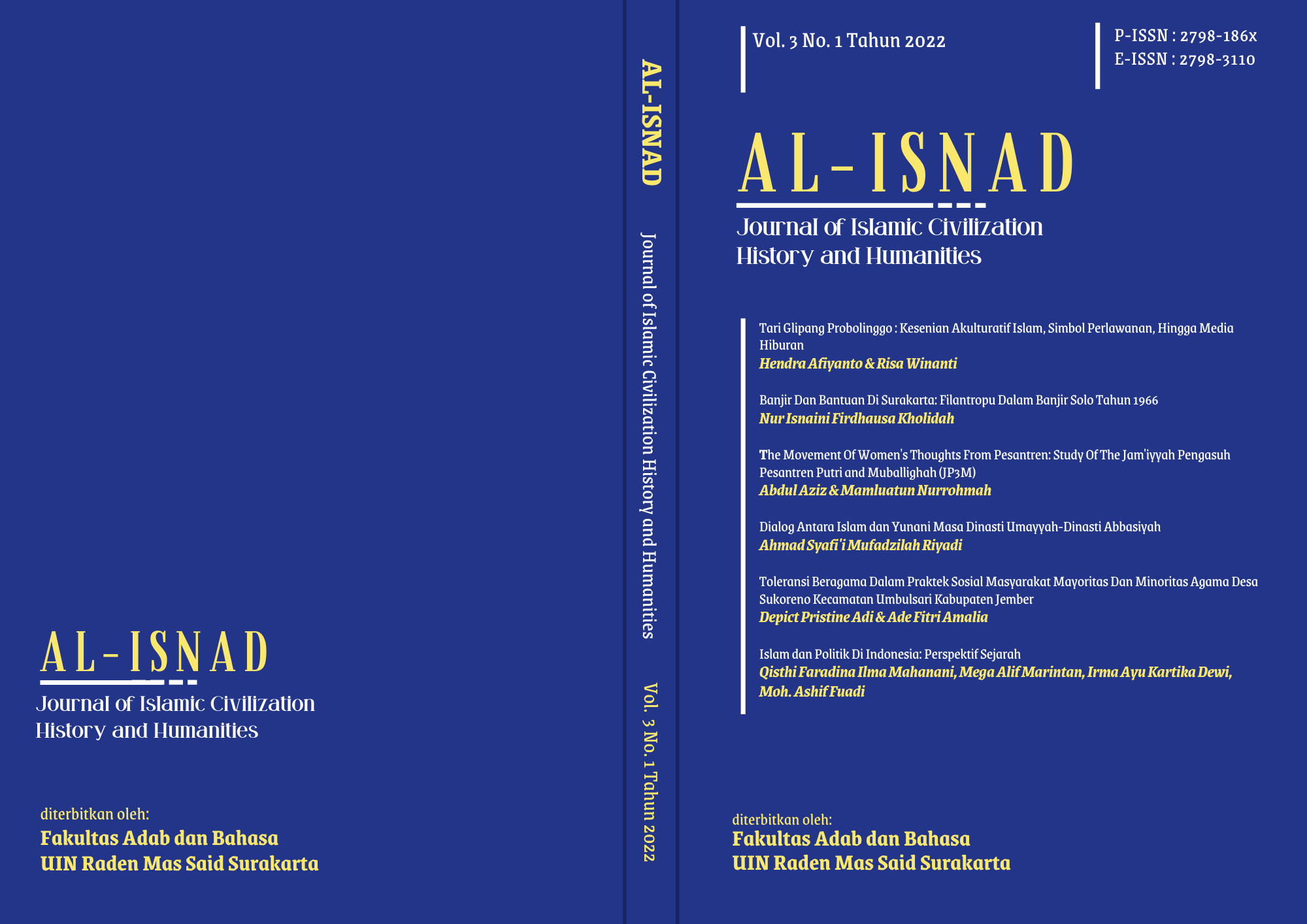Tari Glipang Probolinggo: Kesenian Akulturatif Islam, Simbol Perlawanan, Hingga Media Hiburan
DOI:
https://doi.org/10.22515/isnad.v3i1.5369Abstract
This study is to reconstruct the Probolinggo Glipang Dance during the Dutch colonialism. The long life span makes Glipang Dance live in several different periods of time. It is interesting to study why this Glipang Dance is able to exist through several changes in the times. Is the existence of Glipang Dance related to its ability to negotiate its functions against the times? Does Glipang Dance have a different function according to the needs of the community in each changing era? For analysis, Malinowski's theory of Functionalism was used in looking at the function of Glipang Dance in each period. Historical methods are also used to help analyze Glipang Dance in the past. There are 3 (three) findings in this study. First, the beginning of Glipang Dance's entry into Probolinggo was identified as Islamic-Culture or Islamic acculturative art. The people of Probolinggo, which is majority Islamic, make Glipang Dance have to adapt itself to the religious conditions of the community. Second, in the period of colonialism, Glipang Dance served as a medium for spreading the ideology of resistance. Third, the existence of Glipang Dance until now because of its ability to add to its function in society, namely as an entertainment medium.
Key Words: Arts; Existence; Function Changes; Glipang
Downloads
Downloads
Published
Issue
Section
Citation Check
License

This work is licensed under a Creative Commons Attribution-NonCommercial 4.0 International License.

















